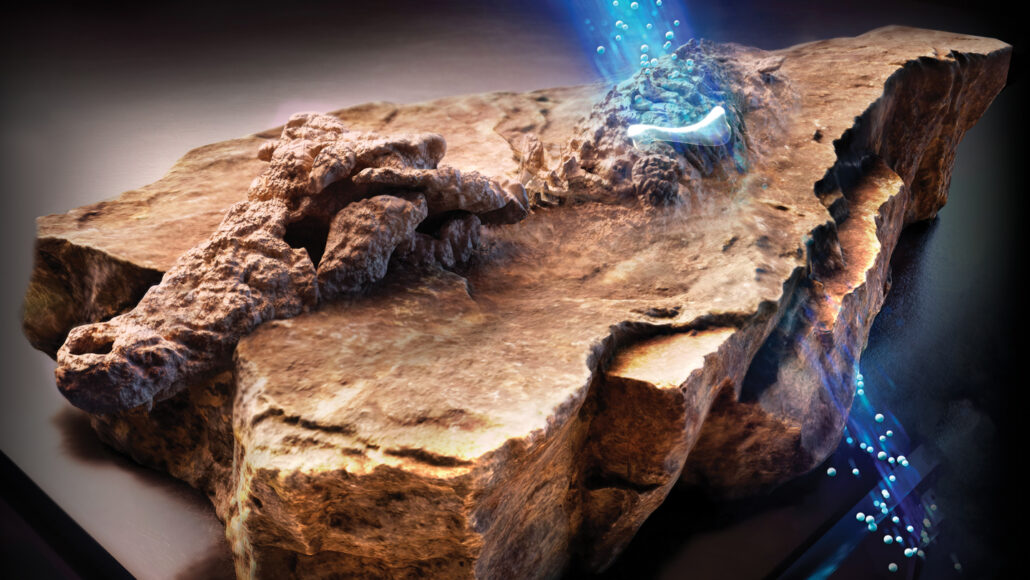Questions for ‘Neutrons are unveiling hidden secrets of fossils and artifacts’

This artist’s illustration imagines a beam of neutrons uncovering a hidden bone — part of an ancient fossil embedded in rock.
Natasha Mutch/SayoStudio

This artist’s illustration imagines a beam of neutrons uncovering a hidden bone — part of an ancient fossil embedded in rock.
Natasha Mutch/SayoStudio
Register to access:
An error occurred. Please try again.
Already Registered? Enter your e-mail address above.